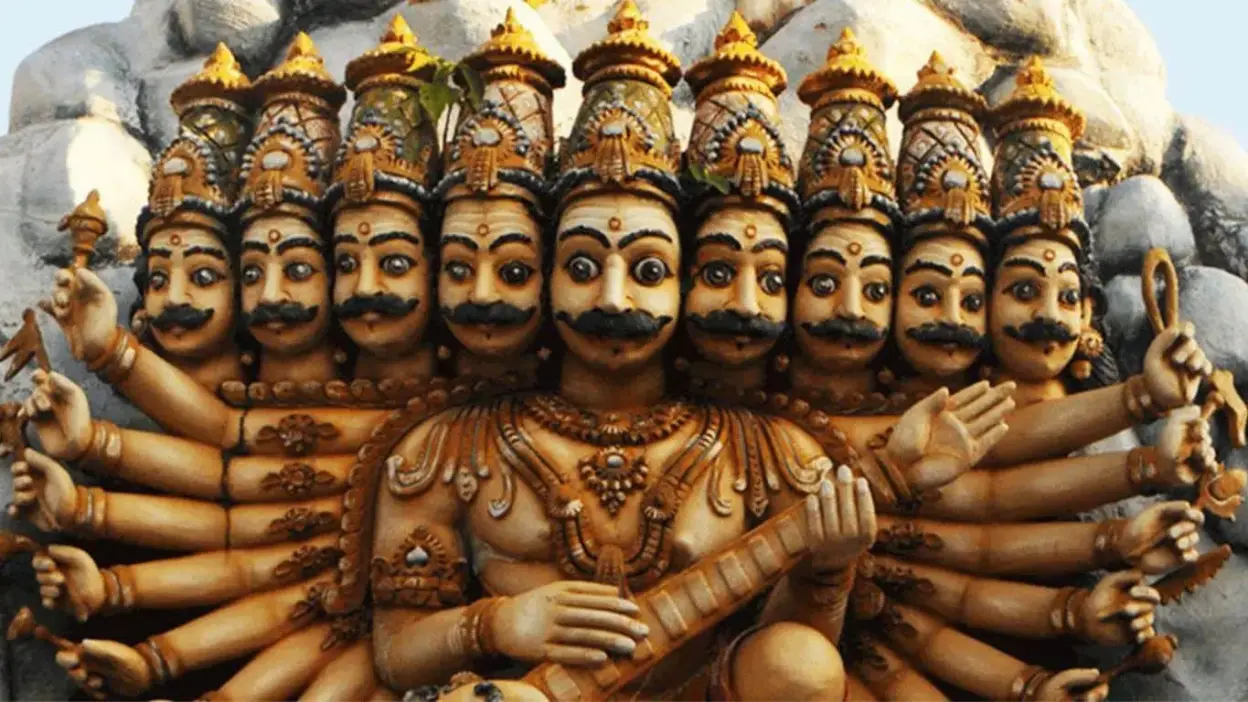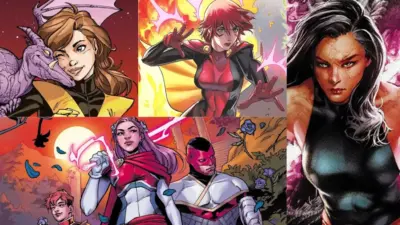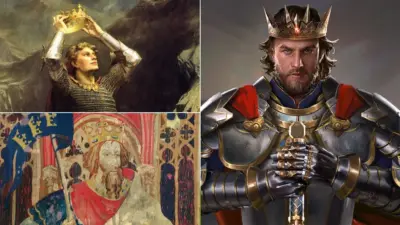In Hindu mythology, where gods and demons clash in legendary battles, imparting timeless teachings. Among these enigmatic figures, one stands as an enduring symbol – “Ravana |The Ten-Headed Demon King of Lanka.” His story is not just a narrative of abduction and epic battles; it’s a reflection of complexity and intrigue. Join us on a journey into the heart of Ravana’s mythology, where we unravel the layers of his character, explore the abduction of Sita, and unearth the profound wisdom hidden within the stories of gods and demons.
Background
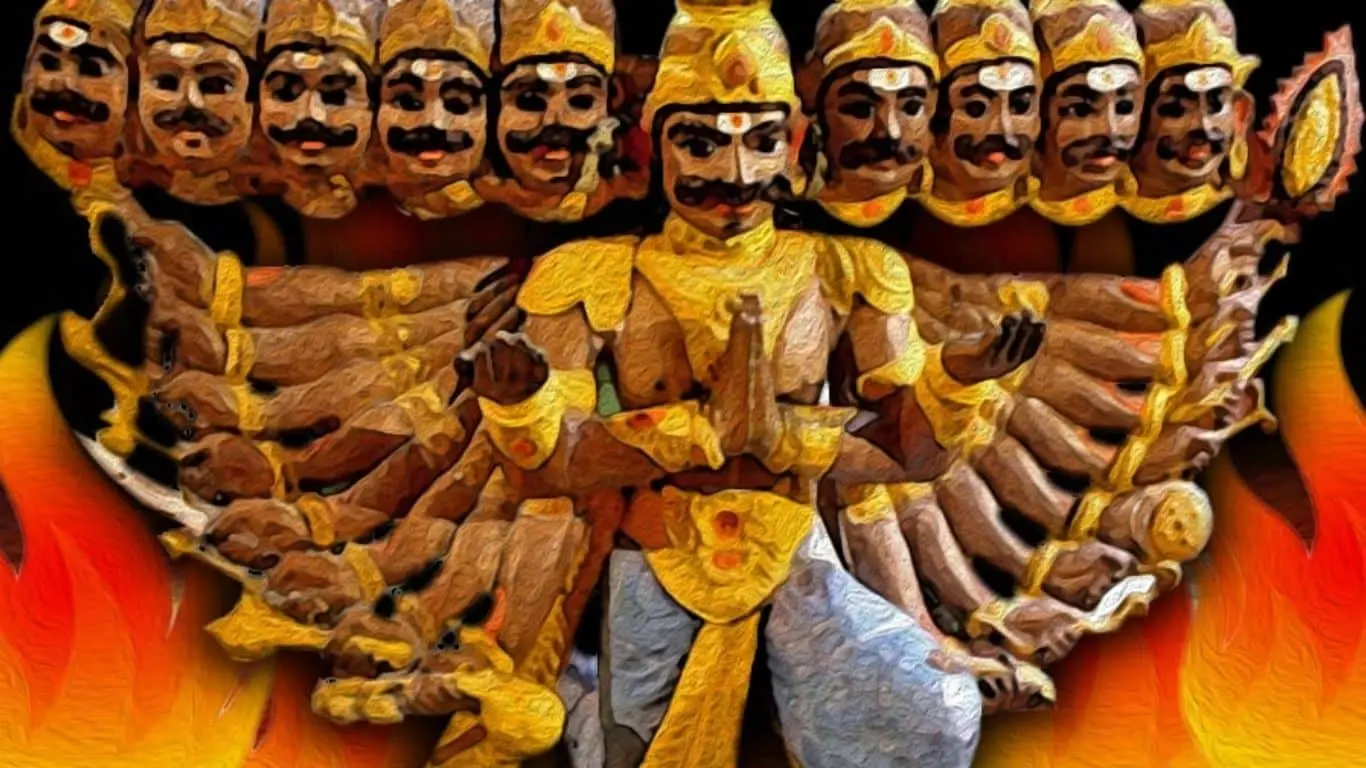
Ravana is a central and complex character. He is not just a mere demon king; his background reveals a multifaceted personality deeply intertwined with the divine and the mortal. Born to sage Vishrava and the Rakshasa princess Kaikesi in Treta Yuga, Ravana’s lineage is steeped in ancient lore. His grandparents include the sage Pulastya and Sumali, the king of the Rakshasas. Ravana’s early education under his father’s guidance made him a formidable scholar of the Vedas.
But it was his relentless penance on Mount Gokarna, spanning 11,000 years, that granted him boons from Brahma, making him nearly invincible. However, a crucial caveat to these boons left him vulnerable to one unlikely opponent – humans. Ravana’s background is a tapestry woven with mysticism, knowledge, and the pursuit of power, setting the stage for the epic battles and profound lessons that would define his legacy.
Personality
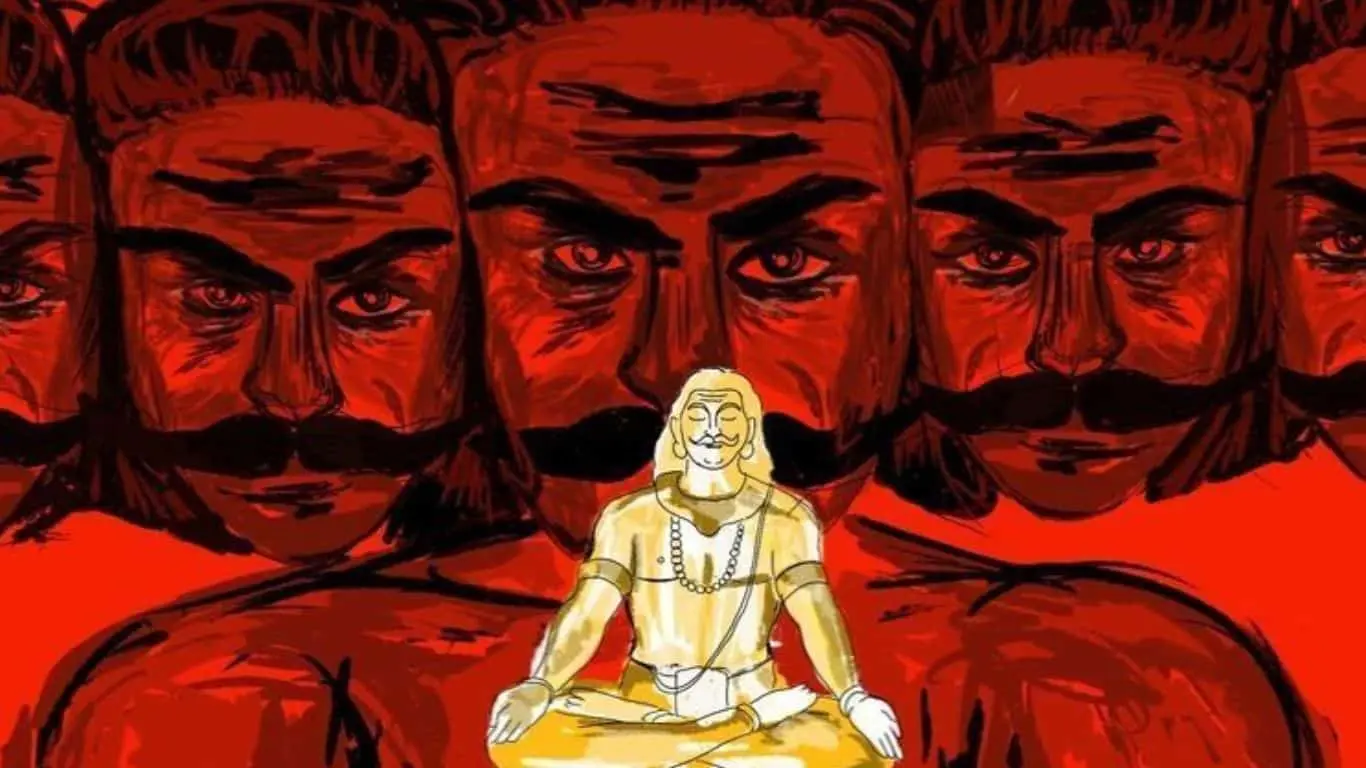
Ravana is renowned for his exceptional intelligence, scholarly pursuits, and martial prowess. With ten heads symbolizing various facets of his personality and knowledge, he possessed deep knowledge of the Vedas, arts, music, and astrology. He was a devout Shiva follower, a scholarly ruler, and a master of the Veena. Ravana authored books on Hindu astrology and Siddha medicine, possessed extensive knowledge in these fields, and held the nectar of immortality in his belly due to a celestial boon from Brahma.
However, his ambition and insatiable hunger for power, coupled with arrogance and pride, drove him to commit heinous acts, most notably the abduction of Sita, Lord Rama’s wife. Ravana’s character is morally complex, occasionally revealing moments of introspection and regret. He is often seen as a symbol of the duality within human nature, representing the constant struggle between good and evil, knowledge and ignorance, and devotion and ego. Ultimately, his tragic fate unfolds as he is defeated by Lord Rama in a battle that signifies the triumph of good over evil.
Significance of 10 Heads
The ten heads of Ravana in Hindu mythology carry deep symbolism, representing the multiplicity of his knowledge and the complexity of his personality, including both his exceptional wisdom and immense arrogance. They serve as a metaphor for the eternal struggle between good and evil within individuals and highlight the spiritual conflict between devotion and deviation. In some interpretations, the ten heads symbolize the ten human senses, emphasizing Ravana’s control over worldly desires. Overall, Ravana’s ten heads encapsulate the intricate nature of human existence, the constant internal battle of choices, and the interplay between intellect and ego.
Role in Ramayana
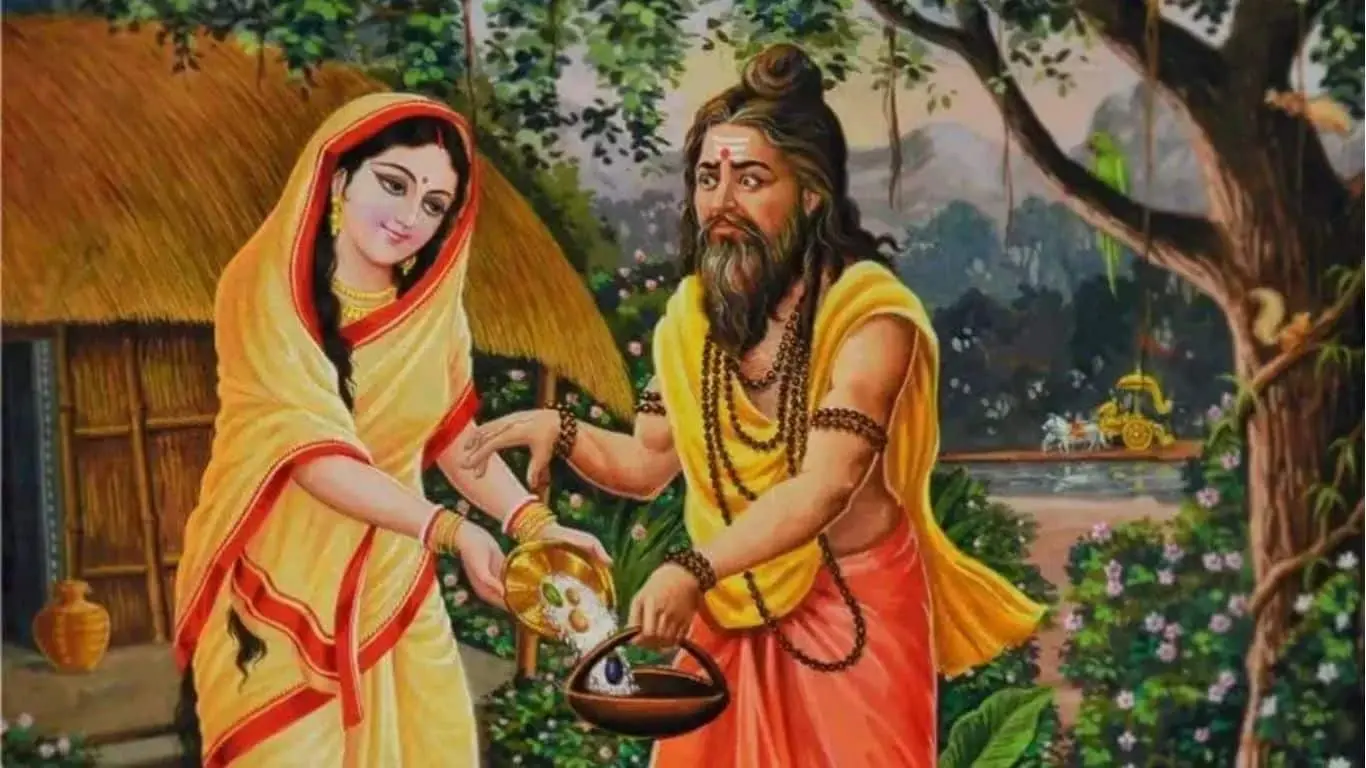
Ravana played a pivotal role in the Indian epic, the Ramayana. He was the arrogant and authoritarian king of Lanka, known for his wealth and power. His most notorious act was the abduction of Sita, Lord Rama’s wife, which ignited the central conflict of the story. Ravana had ten heads symbolizing his immense knowledge and had obtained boons that made him nearly invulnerable. This set the stage for the epic battle between Rama and Ravana, symbolizing the eternal battle between good and evil.
Despite his formidable strengths, Ravana was defeated by Lord Rama, aided by allies like Hanuman and the Vanara army. Rama’s victory demonstrated the triumph of righteousness (dharma) over unrighteousness (adharma). Ravana’s character serves as a cautionary tale, illustrating the consequences of arrogance, lust, and the abuse of power.
Legacy
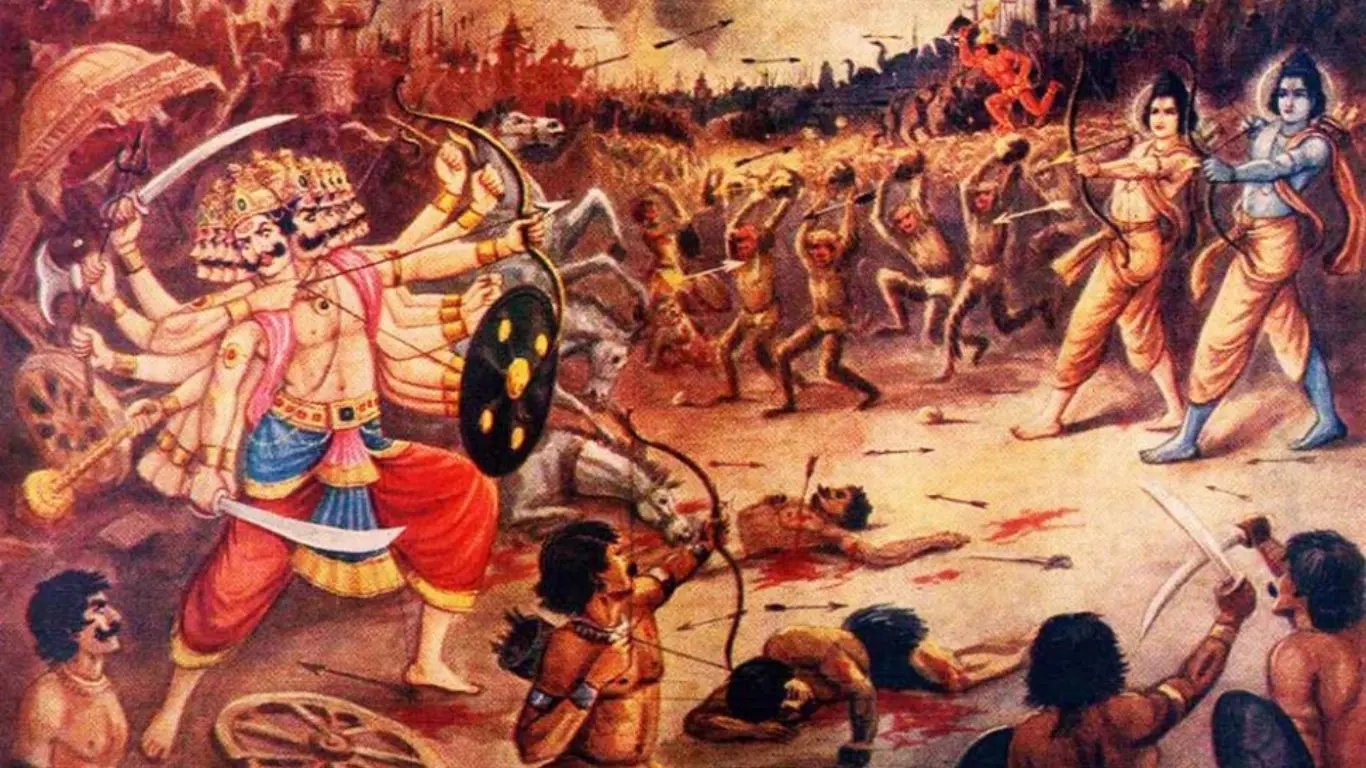
Ravana’s legacy is multifaceted and extends across various aspects of South Asian culture and beyond. In Hindu mythology, he is primarily viewed as a symbol of evil, emphasizing the importance of righteousness (dharma). However, regional and folk traditions offer diverse interpretations of Ravana, sometimes portraying him more sympathetically. His character has inspired a wide range of creative expressions, including literature and the arts.
Philosophical discussions surrounding Ravana revolve around themes such as good versus evil, ego, morality, and the abuse of power. Moreover, Ravana’s character is associated with knowledge and science, as he is depicted as a highly intelligent figure with ten heads, symbolizing his multifaceted intellectual prowess. His legacy remains relevant in contemporary discussions about leadership and ethics, serving as a reminder of the enduring lessons found in ancient epics.
